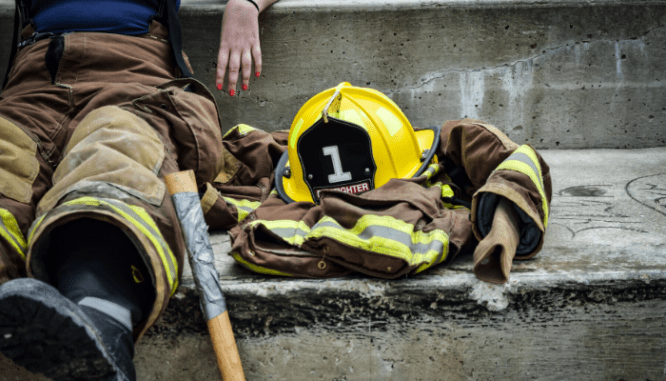Won’t You Be My Neighbor: Demystifying How Does the Good Neighbor Next Door Program Work
- Published on
- 5 min read
-
 Amy Pawlukiewicz Contributing AuthorClose
Amy Pawlukiewicz Contributing AuthorClose Amy Pawlukiewicz Contributing Author
Amy Pawlukiewicz Contributing AuthorAmy Pawlukiewicz is a writer and editor with over 15 years of experience in her field. She has a B.A. in English from Kenyon College and currently resides in Los Angeles.
Picture this: You’re shopping for a new house, and you see that beautiful, special place that already feels like home. It’s the one. Then you check out the neighborhood and realize it’s completely out of your budget. Heartbreaking.
But wait! The government has a program where they will discount 50% — yes, half — of the price so that you and your family can live there. Does that sound too good to be true? It’s not if you qualify for the U.S. Department of Housing and Urban Development (HUD’s) Good Neighbor Next Door program.
So how does the Good Neighbor Next Door program work? In a nutshell, the Good Neighbor Next Door program was designed to strengthen communities by making homeownership possible for public servants. The communities are designated by HUD as “revitalization areas,” and are defined as such by three criteria: Household income, homeownership rate, and the rate of FHA-insured mortgage foreclosure activity.
One note: During riskier loan environments (such as during a recession or pandemic), government programs like Good Neighbor Next Door might be put on hold. Talk to your real estate agent about alternatives if this affects your home purchase.

Who is eligible?
The Good Neighbor Next Door program is available to individuals in certain professions, including:
Law enforcement officers (police officers and sheriff deputies)
To participate in the Good Neighbor Next Door program, you must be a full-time employee of a law enforcement agency at the federal, state, or local level, or a Native American tribal government.
Teachers
To qualify for the program as a teacher, you must be a full-time employee of a state-accredited public or private school for kindergarten through 12th grade. For teachers, there’s another requirement — the home you’re looking to purchase through the Good Neighbor Next Door program must be in the same area in which you work.
Firefighters
You must be employed full-time as a firefighter at the federal, state, or local level, or with a Native American tribal government. As with teachers, the home must be in the area in which you work.
Emergency medical technicians
In order to qualify for the Good Neighbor Next Door program, EMTs must be employed full-time at a federal, state, or local level, or with a Native American tribal government, and the home purchased must be in the same area as where you work.
The program is designed to give people in these specific professions an opportunity to purchase a single-family home at a 50% discount in one of HUD’s “revitalization areas.” Remember, neighborhoods in the program are defined by three distinct criteria:
- Median household income
- Homeownership rate within the neighborhood
- The rate of FHA-insured foreclosure activity in the neighborhood

Where can I find GNND homes?
The Good Neighbor Next Door program exists nationwide, so there are neighborhoods in every state around the country. The homes are either single-family, multifamily (one-to-four-unit properties), townhomes, or condominiums.
However, the homes for sale through the program are HUD-owned properties that previously had an FHA mortgage but were foreclosed on, so the supply of these homes is limited. HUD keeps an up-to-date database of these homes, which is available to the public. You can search by state, county, ZIP code, city, price range, and more criteria.
If there happen to be multiple buyers interested in purchasing a Good Neighbor Next Door home, a lottery system determines who gets it.
What are the conditions?
In addition to meeting the employment conditions cited above, you must agree to live in the house for at least three years (36 consecutive months) before selling the home. There is no option to purchase investment properties under the Good Neighbor Next Door program, so the home must be owner-occupied for the full three years. Not only do qualified buyers get a 50% discount on these homes, but they can also offer as little as a $100 down payment instead of the standard FHA minimum of 3.5%.
At the time of purchase, buyers are required to sign paperwork for a second mortgage for the 50% discounted amount. Don’t panic, though! No interest is accrued and no payments are required on this loan — as long as you remain in the home for the agreed-upon 36-month period. After those three years, the “silent” second mortgage is dismissed, as long as you, the buyer, complied with all Good Neighbor Next Door regulations.
As for the 50% that you’re responsible for, you have to finance that yourself. Financing is available in the form of FHA loans, VA loans, and conventional loans, depending on preference and eligibility.
For example, if you have a lower credit score or a small down payment, an FHA loan would probably be the way to go. FHA loans are available to buyers with credit scores as low as 580, and offer the ability to put down as little as 3.5% for your down payment. You might even be able to take advantage of the Good Neighbor Next Door’s program’s $100 down payment option instead of paying the minimum 3.5% normally required.
If you’re a veteran, you might want to check out financing through the Department of Veterans Affairs. The VA doesn’t set a minimum credit requirement for their loans, but the benchmark varies by lender. However, some buyers can qualify for a 0% down payment, so if you’re a veteran, a VA loan is definitely worth checking out.
Otherwise, a conventional mortgage would work just fine. Conventional mortgages generally require a higher credit score and higher down payment than an FHA or a VA loan. If you have a 20% or more down payment and a good credit score, a conventional loan could be the best option, but you can still get financed with less than 20% down for a conventional loan.
Though you don’t have to be a first-time homebuyer to participate in the Good Neighbor Next Door program, you cannot currently own a home, nor can you have previously owned a home within the last 12 months. If you’re married, your spouse also cannot have owned a home in the last 12 months. The home also cannot be used as a rental property — remember, any homes purchased through the program must be owner-occupied for at least 36 months.

What are the benefits?
There are several benefits to purchasing a home through the Good Neighbor Next Door program, including:
- Competitive pricing. Good Neighbor Next Door homes are generally competitively priced.
- Lender flexibility. Non-FHA approved lenders can finance the mortgage because it is not an FHA program.
- No credit/income standards. There are no income or credit qualifications as long as the buyer meets the employment criteria.
Are there drawbacks?
Potentially, yes:
- Limited scope. First of all, the program is limited to applicants mentioned above: Police officers, firefighters, K-12 teachers, and EMTs.
- Limited inventory. Also, there is a limited inventory of properties available because the properties are all FHA foreclosed homes. “It just depends on the area,” says Buffalo agent Stephanie Morgan. “Some areas are more competitive than others. And it also depends on what the market is doing. In a competitive market, everything’s more competitive.”
- Quality issues. Since the homes all come from foreclosures, they may have quality issues, which you must assume responsibility for. Some homes in the Good Neighbor Next Door program require extensive renovation, so be sure to look carefully at the specifications when searching the HUD database.
- Long process. Because of all the requirements of the Good Neighbor Next Door program, the process can be arduous, which is frustrating for some buyers. “It comes down to bureaucracy. There’s a lot more hoops to jump through,” says Morgan. “If you’re doing anything HUD, you’re going into a website and putting your offer into a system, and you don’t always hear from them in a timely fashion.”
So what if you go through the whole process, qualify for the program, get the mortgage loan, move in — and then get laid off or quit your job? Good news! As long as you complete the 36-month residency requirement, you can stay in the home and complete the program with the “silent” second mortgage falling off at the end of that three-year period.
The Good Neighbor Next Door program is designed to benefit all parties involved in the process; It revitalizes neighborhoods and opens up homeownership to individuals who may not have had the option before. If you are a member of one of the Good Neighbor Next Door’s program’s qualified professions, this can be a great way to move up from renting to homeownership.
Morgan offers this advice to prospective buyers: “Just have patience. Make sure you have all your documentation together in really good order because they will ask for it, sometimes repeatedly. You just kind of have to have your ducks in a row.”
Header Image Source: (Pixabay / Pexels)
